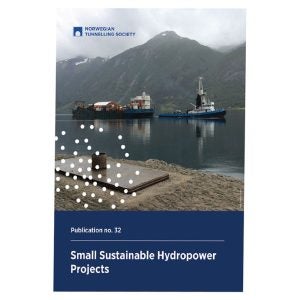Determining the abrasiveness of soil and predicting TBM tool life in shield tunnelling has become a popular research subject in the last few years. Nilsen et al (2006a, 2006b, 2006c and 2007) and Jakobsen and Dahl (2010) converted NTNU/SINTEF´s existing abrasivity measurement technique for hard rock and made it applicable for measuring soil abrasivity. Thuro et al (2007) converted the LCPC abrasivemeter, also intended for hard rock abrasivity testing, to measure soil abrasivity. Gharahbagh and Rostami (2010) and Rostami et al (2012) developed a new soil abrasivity measuring technique that takes into account in situ soil properties. Jakobsen et al (2009) and Langmaack et al (2010) presented results on the influence of anti-abrasion foams on wear by the use of the Ball Mill Test and NTNU/SINTEF abrasivity test. The main conclusions from this work were that the results showed a clear reduction of rock and soil abrasiveness by utilising polymer enriched foams. However, further evaluations are needed due to difficulties in controlling the amount of foam as well as difficulties in comparing abrasiveness results from samples with different grain sizes in the Ball Mill Test. NTNU together with SINTEF and BASF Construction Chemicals are, as a continuation of this initial work, developing a new measuring technique which takes several different soil properties in to account.
The reason for developing a new measuring technique is to try to study tool – soil interaction in a better way, as well as research on how various geotechnical parameters influence the steel wear due to soil abrasivity. The technique that is currently used at NTNU/SINTEF is based on testing disturbed soil material: meaning dry powder, lack of cohesion, limited grain size distribution (< 4 mm) and no influence of soil compaction. Additionally, the current technique does not allow for the testing of the possible influence of chemical additives, which are commonly used in Earth Pressure Balance (EPB) machine.
The new apparatus will be able to handle larger grain sizes (up to 12mm), different soil moisture contents, soil compaction or reproduced in-situ soil density and also the use of chemical or natural additives such as foams and bentonites.
The test is designed to take into account hyperbaric conditions, as the test chamber can be pressurised up to six bar. Additionally the required torque for drilling in the soil sample at variable rotation and thrust will be monitored, thus indicating different torque requirements in various compacted soil-additive-water matrices.
The interaction between soil and steel will be based on both rotation and penetration of the drilling tool. The drilling tool consists of four steel spokes, which drill into the soil to a depth of 200mm in each test. The steel used in the test piece has a Vickers hardness of 227.
Preliminary atmospheric tests have been performed in order to evaluate the test procedure. The tests were conducted on two natural soils. One (Soil 1) is from a local source in the Trondheim area and the other (Soil 2) from site investigation of a planned European EPB TBM tunnelling project. The grain size distribution of Soil 1 ranges from 0 to 6.5mm and for Soil 2 from 0 to 30mm. Particles above 12mm were removed from the Soil 2 prior to testing.
Test procedure
The soil specimens to be tested were assembled in four layers, each compacted by ten strokes of a Proctor Hammer of 50mm diameter and 2.5kg load. The rotation speed of the drilling tool was set at 90 rev/min, and a constant penetration rate of 0.63mm/rev or 56mm/min was applied. The test was conducted by drilling stepwise to depths of 50, 100, 150 and 200mm. The reason for the stepwise drilling method was to achieve better mixing between the foam and soil.
Dry soil application: In order to obtain a dry soil, the present soil samples were gently dried in a ventilated oven at 30°C for 48 hours.
Humid soil application: Various amounts of water were added and mixed with the specimens to be tested in order to achieve homogeneous moist soil samples.
Conditioned soil application: Foam with an expansion ratio FER = 10 (air/liquid ratio = 10:1) was applied on top of the compacted and humidified soil sample for the tests performed with additives. The foam injection ratio FIR = 30 per cent (foam:soil ratio = 300 litre per cubic metre) was used meaning that one litre of foam was utilised for excavating approximately 3.3 litres of soil. The foam used was BASF Meyco SLF41, which is a polymer enriched soil-conditioning additive. Generally the concept of using soil-conditioning foams is that their high surface area will confine fines in the soil matrix and subsequently reduce the friction between both soil grains and the interaction between the soil and steel tool.
As shown by Jakobsen et al (2009), and Rostami et al (2012), soil and rock abrasiveness increases up to a certain level generally expected with increasing moisture content. Subsequent to the abrasiveness’ ‘peak level’ a general decrease of soil and rock abrasiveness occurs. A similar phenomenon is reproduced with the test apparatus described here. For Soil 1 the soil abrasiveness’ peak occurs at approximately six per cent moisture content and then reduces as more water is added. The peak is assumed to be influenced by the soil’s grading curve as well as general abrasion properties such as grain mineralogy and grain shape (see figure 5).
The testing performed with addition of soil conditioning foam leads to a reduction of the soil abrasivity peak (reduction shown in red shaded area in figure 5), and hence provides a good indication of the functionality of soil conditioners. However, at low moisture contents the introduction of soil conditioners in certain cases may intend to increase the abrasivity, here shown as green patterned area in figure 5. This phenomenon has also been observed at some EPB drives executed in dry soil open excavation in Switzerland and Germany where the introduction of small amounts of soil conditioners reduced the TBM cutter tool life.
The increase of soil abrasivity in low moisture contents is most likely caused by the introduction of additional moisture by using soil conditioning agents. Taking the total moisture into account, the soil-conditioning agent reduces the wear, except for the high moisture content area. The increased soil cohesion probably leads to a slower decrease of wear than just using water. The adjusted picture is shown in figure 6.
Soil 1 and Soil 2 are quite similar with respect to the measured abrasivity properties according to the existing Soil Abrasion Test procedure, and the initial measurements by the new test. The quartz content is also in the same range. However Soil 2 has a more uniformly graded sieve curve that might cause a higher resistance, and thus higher steel wear on the excavating tools. In general a reduction of abrasive wear in the range of 25-45 per cent was observed by applying adequate soil conditioners to the soil samples.
Conclusions
The few tests conducted clearly indicate that moisture content influences the abrasive wear in a steel – soil interaction, similar to the Rostami et al (2012) findings. The introduction of soil conditioners reduces the potential abrasivity peak of the tested soil samples. However the current tests are so far only based on sandy soils, meaning that further testing on other materials is needed.
The introduction of an additional ‘soil abrasion test’ is, at present, not intended as a new index test. The idea of introducing this test procedure is to provide self-explanatory test results taking into account several in-situ soil properties.
Based on the promising results NTNU/SINTEF, together with BASF, intends to perform extensive testing in order to show the influence of various soil conditioners on abrasivity and TBM torque, as well as the effects of confinement pressures and soil compaction.






